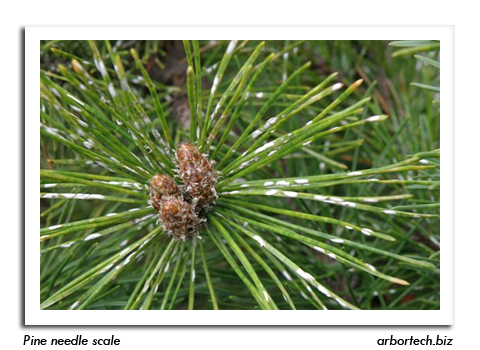
 |
|
|
Nursery & Forest
Volume 59 Number 4 Date 05/22/2014 ROSE MOSAIC VIRUS - Rose bushes infected with rose mosaic virus (RMV) were found last week in Price County on stock originating from Tennessee. This virus disease, caused by a complex of prunus necrotic ringspot virus and apple mosaic virus, may not necessarily kill plants, but infected roses can exhibit small, distorted flowers, poor flower production, early autumnal leaf drop, and reduced vigor and hardiness. Symptoms include yellow or orange zigzag banding on the foliage that is usually most pronounced during periods of cool weather, similar to those experienced this spring. The chlorosis caused by RMV is unlike nutrient deficiency and can be a diagnostic feature. Rose mosaic virus is believed to be spread through the use of infected root stock, cuttings and scionwood, or possibly through rare natural root grafts. It is generally considered to be non-contagious in the field. Infected plants should be destroyed as there is no cure. -- Tim Allen, DATCP Nursery Inspector IRIS BORER - This serious pest of irises in Wisconsin was found on iris 'Avalon Sunset' during recent greenhouse inspections. The pinkish-white larvae emerge at this time of year and bore into iris leaves, causing water-soaked spots. Larval feeding continues downward through the leaves and into the below-ground rhizomes during the summer months until pupation occurs in the soil. Adult iris borers appear in late August and early September. Control consists of manually removing and destroying the larvae or using an insecticide product containing permethrin, cyfluthrin bifenthrin, spinosad or imidacloprid. Treatments must be applied when new iris shoots are four to six inches long, before the larvae tunnel deep into plants. A second application is usually required 10-14 days later. Good fall sanitation including the removal of old plant debris is also recommended to reduce overwintering sites. APHIDS - Light to moderate colonies of aphids were noted on basil 'Pesto Perpetuo', English lavender, French tarragon, sedum 'Autumn Fire' and zinnia at retailers in southeastern Wisconsin. These insects can directly damage their plant hosts when densities are high, but in most instances aphids are an aesthetic problem. Of larger concern is the secondary growth of sooty mold which results from their honeydew production. Aphid populations should be monitored closely and chemically treated with an insecticide registered for aphid control in nurseries and greenhouses if necessary. Insecticidal soaps and horticultural oils kill by contact, so thorough coverage is required. IMPORTED WILLOW LEAF BEETLE - The larvae of this willow and poplar defoliator, which feed gregariously in rows and skeletonize leaves, should be visible by early June. Leaf injury caused by the willow leaf beetle is primarily an aesthetic problem and has little adverse effect on trees. In rare, high population situations, horticultural oils, Bacillus thuringiensis var. tenebrionis, or insecticidal soaps can be used against the early larval stages. Two generations occur annually in Wisconsin. COLD DAMAGE - Perennials and annuals continue to show the effects of exposure to low temperatures this spring. Symptoms such as water-soaked lesions, leaf mottling and chlorosis, and stunted growth have been reported from Oconto, Ozaukee, Price, Sheboygan, Washington and Waukesha counties, although the problem is common statewide. A wide variety of plants have been affected to some degree, including daylily 'Red Volunteer' and 'Corryton Pink', delphinium 'Belladonna', 'Black Knight', 'Blue Jay', 'Casa Blanca', 'Galahad', 'Guinevere', and 'Magic Fountains'. Aster, coreopsis, hibiscus, hosta, mandevilla, petunia, sedum, vinca and various tomatoes and peppers have also been injured. Much of the damage observed could have been prevented by keeping susceptible plants indoors until the threat of frost has passed. PINE NEEDLE SCALE - Emergence of first generation crawlers has begun across portions of southern and central Wisconsin, where lilacs are in full bloom. Controls applied against this mobile stage shortly after egg hatch are most effective. The proper timing of insecticidal treatments should be determined by monitoring infested pines for newly emerged crawlers. -- Ellen Hermanson, DATCP Nursery Inspector GYPSY MOTH TREATMENT - Aerial spraying for gypsy moth caterpillars started on May 22 in Green and Rock counties. Two blocks in Green County, totaling approximately 605 acres, and a single 29-acre block in Rock County were treated with Bacillus thuringiensis var. kurstaki, a biological insecticide acceptable for use in certified organic food production and handling. Applications will continue on May 23 in La Crosse and Lafayette counties, and resume following the Memorial Day holiday. Additional spray program updates, including information on treatment locations and progress, are available at gypsymoth.wi.gov . -- Rick Hummell, DATCP Gypsy Moth Program 





|
|
|